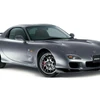The history lost when Honda closes its Swindon plant

- Honda’s main UK base at Swindon will close at the end of July
- Millions of vehicles and engines have been produced at the site since 1985
- Swindon factory was home to Civic, Jazz, CR-V and Accord production
Honda’s mammoth Swindon plant is nearing the end of its life as a car manufacturing facility. The site will close its doors to production at the end of July, after over 35 years of operation.
While the building will be handed to new owners, the end of car manufacturing at the site heralds another period of uncertainty for the automotive industry in the UK.
A total of 3,500 jobs will have been lost once the doors close, with the factory entering a decommissioning phase before being handed over to logistics company Panattoni, who will invest more than £700 million in the site.
While not the oldest automotive manufacturing site in the UK, far from it, the Swindon plant has produced some of the most dependable and revolutionary cars in the UK and around the world.
Before it began producing cars in 1992, the site had been used for aircraft production, especially during World War Two. Aircraft produced at the site (until 1961) included the Spitfire, Seafire, Attacker, Swift and Scimitar, before the factory became a manufacturing hub for Vickers components until the 1980s.
Honda purchased the site in 1985 and established Honda UK Manufacturing, initially for engine production with the first units rolling off the assembly line in 1989.
The first full car to be produced at the site was the Accord in 1992 with the Civic next in 1994. The CR-V was the third vehicle to be added to the list while the Jazz followed suit in 2009, by which time, over two million vehicles had been built at the facility. CR-V production ended in 2018 with 1.2 million units built, while the Jazz was manufactured at the factory until 2014.
But it’s the Civic that has had the longest lifespan at the site, with five different generations of the car built at Swindon, including the eighth generation that took car styling to a whole new level, and transformed the perception of the model as an ‘older person’s runaround’ to something desired by much younger buyers.
Let’s not forget too, that the legendary Type-Rs have until now been built in Swindon, with the current generation breaking the Nürburgring lap record for front-wheel drive cars in 2017, and even today, is only three seconds shy of the benchmark.
And while the Swindon-produced Civic was a pretty common sight on the roads of Britain, it’s become a common sight on the race tracks too, and a very successful one at that.
British-built Hondas first raced in the British Touring Car Championship in 1995, with the first three win coming in 1996 with David Leslie. Hondas have since won a further 179 times thanks to drivers including Matt Neal, Gordon Shedden and James Thompson, and only Ford has more wins in the series.
All those BTCC winners will have rolled off the production line at Swindon, before being adapted into racers. Five of the 29 cars on this year’s grid are FK8 Type-Rs.
At its height, the Swindon plant produced 250,000 vehicles a year, though that number dropped to 160,000 when the Civic became the sole car produced at the site.
With declining sales, the future of diesel power under scrutiny and with a new trade deal brokered between Japan and the EU reducing car import tariffs to zero, Honda no longer needed such a big base in the UK, with production shifting to Japan, North America and China.
Thus bringing down the curtains on one of the UK’s most significant manufacturing centres of the past four decades.
Richard Randle is a motorsport PR professional working with the UK’s top racing circuits and the UK’s premier single-seater category, the BRDC British F3 Championship.


